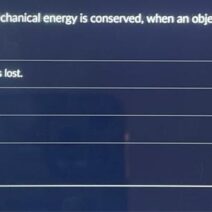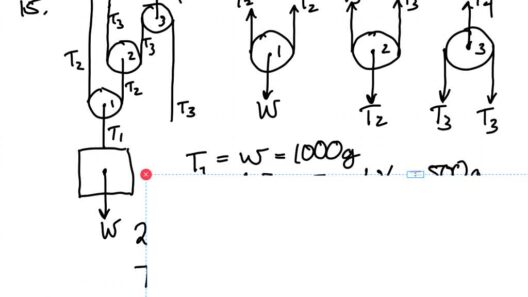Energy conservation is a pivotal concept in physics and environmental science, especially when considering the myriad interactions that occur between objects. Particularly, the inquiry into whether energy is conserved in non-friction contact interactions opens an intriguing dialogue about fundamental principles governing motion and energy transfer. This discussion extends beyond mere academic curiosity; it holds profound implications for real-world applications, ranging from engineering to environmental conservation.
To understand the conservation of energy in non-friction contact interactions, we must first delineate what constitutes this type of interaction. Non-friction contact interactions occur when two or more bodies exert forces on each other without the influence of frictional forces. Such interactions can be primarily categorized into elastic and inelastic collisions. In both cases, the manner in which energy is conserved or transformed significantly varies.
**Elastic Collisions**
In an elastic collision, two colliding bodies rebound off each other without a loss of kinetic energy. In this scenario, both momentum and kinetic energy are conserved. Imagine two pool balls colliding on a smooth table; they contact without interpenetration, transferring energy back and forth while retaining the total kinetic energy of the system. Mathematically, the principle can be expressed as:
m1v1i + m2v2i = m1v1f + m2v2f
where m denotes mass, v indicates velocity, and the subscripts i and f refer to the initial and final states, respectively. Importantly, in elastic collisions, no kinetic energy is transformed into other forms of energy.
**Inelastic Collisions**
In stark contrast, inelastic collisions involve a loss of kinetic energy, though momentum remains conserved. During these interactions, some of the kinetic energy is converted into other forms of energy, such as thermal energy or sound. As an illustrative case, consider a car crash; the crumpling of the car body absorbs energy, which dissipates as heat and undergoes transformation rather than preservation. Here, we observe a deviation from energy conservation in its kinetic form, emphasizing that while total momentum remains unchanged, the total mechanical energy is not conserved.
In mathematical terms, the equation for momentum conservation still applies:
m1v1i + m2v2i = m1v1f + m2v2f
However, the kinetic energy equation now indicates a reduction:
KEi > KEf
This acknowledges that during the interaction, energy has been transformed rather than conserved in its original kinetic form.
**Conservation Laws in Non-Friction Interactions**
When assessing energy conservation, it is essential to consider the conservation laws that govern these interactions. In an isolated system devoid of external forces, the conservation of momentum holds true. However, when energy transformation occurs—as seen in inelastic collisions—the conservation of mechanical energy is not valid. This recognition is crucial when analyzing real-world systems where external forces, energy losses, or non-ideal conditions complicate the straightforward application of conservation principles.
**Real-World Applications and Implications**
The implications of energy conservation during non-friction contact interactions extend into various fields, notably physics, engineering, and environmental science. For instance, in engineering designs ranging from automobiles to structural frameworks, a clear understanding of dissipative forces and energy loss mechanisms is paramount. Safe and efficient designs must take into account not only the conservation of momentum but also the transformations of energy during collisions and interactions.
Moreover, the study of these principles serves as a basis for developing sustainable technologies. Understanding energy transformations can direct innovations towards energy-efficient systems. For example, when analyzing transportation systems, engineers are increasingly focused on minimizing energy losses during collisions, which can lead to enhanced safety features and improved energy efficiency in vehicles.
**Environmental Considerations**
On an environmental front, the concept of energy conservation is not only pivotal scientifically but ethically resonant. As societies march toward sustainable practices, recognizing that energy cannot be created or destroyed—only transformed—fuels a movement toward conservationist policies. By understanding the mechanisms behind energy transfers and transformations, stakeholders can effectively devise strategies that minimize energy waste, ultimately contributing to a reduction in environmental impact.
Engaging in discussions about energy conservation in non-friction contact interactions calls for a multidimensional approach. This incorporates an analytical perspective alongside a commitment to sustainability. As humanity progresses, the recognition that every interaction has energy implications might inspire innovative solutions that respect ecological integrity while promoting technological advancement.
In summary, while energy conservation in non-friction contact interactions varies based on the nature of the collision—elastic or inelastic—the overarching principles of momentum conservation remain firm. Understanding the complexities of energy transformation during interactions not only enhances our knowledge of physical laws but also informs our approach to modern engineering challenges and environmental stewardship. The intertwining of these concepts brings us closer to a more sustainable future, where energy efficiency becomes a guiding principle in our societal advancements.








